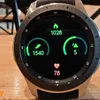If you're looking for an Android tablet, the Samsung Galaxy Tab S6 is your best bet
The Galaxy Tab S6 sports a premium design, and costs significantly more than Samsung’s earlier devices. But if you’re a fan of Android tablets, look no further.
For a very long time, consumers never regarded tablets as productive devices. That, of course, changed with the large-sized (9.7-inch and above) iPads, though they still weren’t considered a good enough replacement for laptops.
Plus, iPads are restricted to the iOS universe. In the Android universe, perhaps only one brand has consistently come up with reliable tablets: Samsung.

In October, Samsung launched the Galaxy Tab S6 along with its Galaxy Watch 4G and the Galaxy Watch Active 2 devices. The tablet is bundled with an SPen stylus and pre-loaded with Samsung DeX computing platform.
It looks and feels premium. In comparison, prior tablets from the Samsung stable feel flimsy and tiny.
Let’s take a look at how the device fares:
Premium unibody design
The Galaxy Tab S6 boasts of a unibody design with subtle curved corners. The tablet weighs just 420g and is carved out of a single block of aluminium. You can easily grip it with one hand or slip it into a pouch or a regular backpack.
At a thickness of just 5.7 mm, Galaxy Tab S6 is lightweight and one of the more portable laptops out in the market. This is one of its USPs.
Samsung gets the design and button placement right.
The volume rocker and power buttons, and the SIM card slot are placed on the right, while the speakers and charging ports can be found at the bottom. This is helpful if you’re using the tablet in portrait mode.
External keyboard
It takes a few minutes to boot the Galaxy Tab S6 and attach the Book Cover Keyboard. If you intend to use the tablet for heavy-duty typing, then an external keyboard makes sense.
The Book Cover is a perfect fit for the Galaxy Tab S6, but there is a catch.
The keys are too cramped and could pose some problems if you need fast typing. Getting used to the trackpad and the shortcuts can be a pain and sometimes you just end up hitting a wrong button. Many other Bluetooth keyboards actually do a better job of this.
Even then, the Book Cover does a decent job and prevents your fingers from the damage that comes with long hours of typing on a tablet. The only thing to note is that it needs a flat surface to function to its fullest.
Fantastic S-AMOLED display and fine audio
The Galaxy Tab S6 comes with a 10.5-inch Super AMOLED (or S-AMOLED) panel (of 2560x1600 resolution). The bezels around the display aren’t razor thin, which helps with the grip, and also prevents any accidental touches.
It is no secret that Samsung makes some of the best displays in smartphones, and that is extended to its tablet range too. The AMOLED panel has colours that pop, some great viewing angles, and good sunlight legibility. Watching videos, reading and typing text are a real pleasure.
The OnePlus 7 Pro and the OnePlus 7T have spoiled consumers with displays that come with higher refresh rates (the number of times a screen redraws an image).
Even the iPad Pro has one, but the Galaxy Tab S6 is devoid of this feature. This is perhaps the only thing lacking in an otherwise premium and sturdy device.
The Galaxy Tab S6 comes with a quad-speaker setup manufactured by AKG Acoustics. This sound is loud and clear and can fill a room with ample ease.
Camera: Good enough for video calls
The tablet houses an 8-megapixel selfie camera and a dual-camera setup at the back. It is made up of a 13-megapixel primary sensor and a 5-megapixel secondary sensor.
Most people aren’t going to whip out their tablets to take pictures, because smartphones do the job pretty well. But, if they do, the Galaxy Tab S6 puts up a decent performance in daylight.
Tablet cameras are largely used for making video calls, and that is a surprisingly good experience with the Galaxy Tab S6.
Allows smooth multitasking
We didn’t face too many hiccups while testing out the Galaxy Tab S6. We didn’t do heavy gaming, because tablets really aren’t tailored for that.
But, the device holds up well for all your other needs - social media, text typing, web-browsing, video-watching, etc. The SPen is particularly useful for taking quick notes.
The Galaxy Tab S6 also runs efficiently for over 24 hours without heating up.
Stellar battery life
The Galaxy Tab S6 is packed with a massive 7,030 mAh battery. In terms of endurance, it is absolutely stellar. A single charge lasts for nearly 36 hours even after streaming, browsing, editing and casual gaming.
The device supports a 4G SIM, which will surely impact battery life, but not so much that it cannot take a single day usage.
Verdict: best tablet Android has to offer
The Galaxy Tab S6 retails at Rs 59,900, which is on the steeper side for an Android tablet. The Book Cover Keyboard is sold separately for Rs 10,999.
That’s over Rs 70,000 off your wallet. Some users might argue that you can get an older MacBook Air or a newer iPhone at that price.
But, if you’re bound to the Android ecosystem, then the Galaxy Tab S6 is the only tablet that matters irrespective of its hefty price tag.
Plus, it has got an exceptional display, good multitasking prowess, superb battery life, great audio capabilities. Basically, all one needs in a tablet.
Also, few non-smartphone devices are as lightweight and portable. So, look no further than this!
(Disclaimer: The views and opinions expressed by the author are his own and do not necessarily reflect those of YourStory Media.)
(Edited by Teja Lele Desai)








